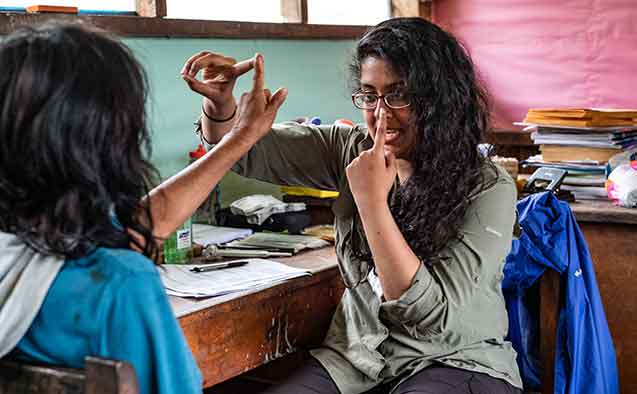Researchers identify cognitive impacts of mercury exposure on Peru’s Matsigenka people

A new approach to measuring cognition has helped a research team led by Wake Forest University psychologist Alycia Silman understand the health impacts of mercury exposure on the Matsigenka people of Peru.
The group found a negative association between mercury levels in the hair of Matsigenka study participants and their performance on cognitive tests, demonstrating a tangible and ominous link between environmental mercury pollution and human cognition in this Amazonian Indigenous group. The Matsigenka live in villages upriver from areas affected by illegal gold mining and are exposed to high levels of mercury by eating contaminated fish.
Published earlier this month in the International Journal of Environmental Research and Public Health, the study is a collaboration between experimental psychologists and environmental researchers. The researchers used working memory tests involving listening and recall and identification of abstract shapes to assess the cognitive skills of those participating in the study.
Silman hopes the study will bring about a more complete understanding of mercury pollution’s harmful impacts. And most importantly, this research will benefit the Matsigenka.
“They are living in their homeland but exposure to mercury may be limiting them as people and how their children grow and develop,” she said.
Silman, a faculty affiliate with the Center for Energy, the Environment and Sustainability (CEES), worked in conjunction with scientists from Wake Forest’s USAID-funded Centro de Innovación Científica Amazónica (CINCIA), the Wake Forest School of Medicine, the University of North Carolina – Greensboro, and Peru’s Universidad Peruana Cayetano Heredia.
CINCIA Executive Director and Wake Forest Research Associate Professor in Biology Luis Fernandez explains the urgency and importance of this research: “Because of the boom of mercury-enabled illegal gold mining in places like the Amazon, there has been a huge spike in reports of mercury releases to air, water and soil, and of mercury exposure to Indigenous human populations. There is a pressing need for effective methods to understand and quantify the impact of this mercury on already vulnerable and marginalized native populations of the Amazon.”
More complete coverage of this research is available on the CEES website. Read the full story by Cassie Freund here.
Photo above is courtesy of Jason Houston/CINCIA.
Categories: University Announcements
Wake Forest News
336.758.5237
media@wfu.edu
Meet the News Team
Wake Forest in the News
Wake Forest regularly appears in media outlets around the world.




